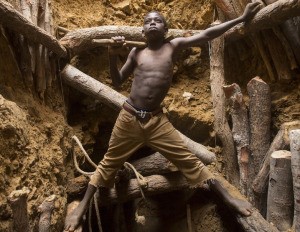Child Mining: 10 Facts (click on title if a numbered list does not appear)
- It is estimated that around 1 million children work in mines throughout the world.
- Mining is considered a form of hazardous labor unfit for children under any circumstances, including poverty. Mining can lead to serious injuries; health consequences and an unknown number of children lose their lives while mining every year.
- Around the world, children, ages 5-17, work in mines for as little as $2 per day.Because of the relatively small number of child miners (one million), compared to child laborers in agriculture (over 100 million), child mining has not received the attention it deserves. Additionally, mining often takes place in temporary, remote, small-scale locations making it difficult to regulate and monitor.
- Because of the relatively small number of child miners (one million), compared to child laborers in agriculture (over 100 million), child mining has not received the attention it deserves. Additionally, mining often takes place in temporary, remote, small-scale locations making it difficult to regulate and monitor.
- Children can be found working in mines in Asia, Africa, and Latin America and in parts of Europe.
- Work for child miners includes digging shafts, crushing rocks, and carrying ore in gold mines and digging, scraping and lifting in salt mines and carrying and crushing large stones in quarries.
- Child miners face many potential health consequences due to the nature of their work including: over-exertion , respiratory ailments, headaches, joint problems, hearing and vision loss.
- In addition to the risks faced by all child miners, children miners in gold also face potential side effects from working with Mercury. Mercury is a highly toxic substance used to extract gold. Mercury poisoning can affect a person’s brain, heart, kidneys, and lungs. Additionally, Mercury poisoning is extremely detrimental to children, affecting their nervous system development leading to long-term developmental disabilities.
- Children are often forced into mines by poverty. Human Rights Watch, a CLC member, believes that the boycott of goods produced from mines where children work is not the answer. Reducing the income of already impoverished communities can lead to higher levels of children labor. Instead, companies and their supplies need to work to initiate programs removing children from the supply chain.Western countries, including the United States and the United Kingdom are top destinations for products of child mining. Consumers often buy diamonds, gold and precious gems from retailers with disregard to the origin of their jewelry and the human toll that helped produce it.
- Western countries, including the United States and the United Kingdom are top destinations for products of child mining. Consumers often buy diamonds, gold and precious gems from retailers with disregard to the origin of their jewelry and the human toll that helped produce it.
Sources:
- https://www.ilo.org/ipec/areas/Miningandquarrying/lang–en/index.htm
- https://www.ilo.org/ipec/areas/Miningandquarrying/lang–en/index.htm
- https://www.pbs.org/newshour/updates/world-july-dec13-burkinafaso_07-10/
- https://www.ilo.org/ipec/areas/Miningandquarrying/lang–en/index.htm
- https://www.ilo.org/ipec/areas/Miningandquarrying/lang–en/index.htm
- ILO “Child labor in Salt Mining: The Problem”, ILO: “Child labor in Stone Quarrying: The Problem, Global March: https://www.globalmarch.org/content/children-engaged-unsafe-mining
- ILO “Child Labour in Gold Mining: The Problem”, EPA https://www.epa.gov/hg/effects.htm
- ILO “Child Labour in Gold Mining: The Problem”, EPA https://www.epa.gov/hg/effects.htm
- Human Rights Watch: https://www.hrw.org/news/2013/09/11/africas-child-mining-shame
- Global March: https://www.globalmarch.org/content/children-engaged-unsafe-mining



